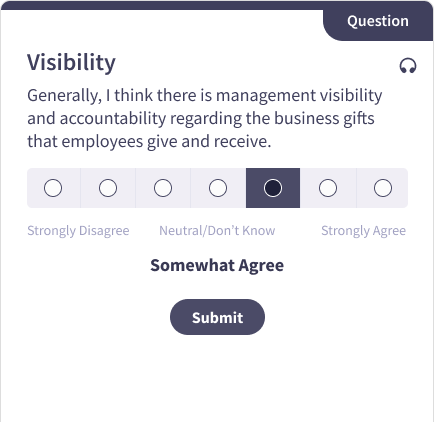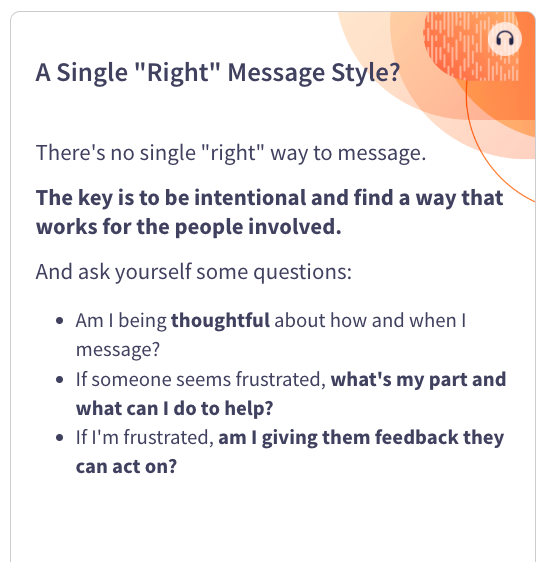
Understanding Different Feedback Approaches
As our workforce expands on a global scale, encompassing offices and partnerships, we encounter diverse cultural dynamics and varying communication styles. It is crucial for all of us to cultivate cultural awareness, enabling effective communication and adaptable feedback across all channels of communication.
Microlesson DescriptionIn this skill-building microlesson, we showcase the differences between direct and indirect feedback styles and why it’s important to be more culturally aware. The “feedback sandwich” (giving a compliment, then constructive feedback, then another compliment) may be appreciated in some cultures but may be misunderstood by people who are used to more direct feedback. The lesson teaches employees and managers the skill of giving feedback and receiving feedback on different communication styles and adjusting to cultural dynamics. At the end of the microlesson, we provide learners a tip sheet on understanding each other’s feedback styles in the workplace.
Key Concepts- Actionable tips for adapting to direct and indirect feedback styles.
- Understanding how different cultures communicate feedback and why it’s important to be more culturally aware.
- How to observe a colleague’s communication style and adjust to accommodate their needs.
Microlesson Features
- Employee sentiment pulsing questions that provide leaders with insights into their workforce's core cultural competencies
- Emtrain's Expert Answers tool, enabling employeees to submit anonymous questions about sensitive issues.
- Rich, contemporary video scences illustrating key concepts through realistic scenarios
- A data driven, skill-based approach to eLearning that establishes a shared language for employees.

Related Resources
Related Trainings
Frequently Asked Questions
Below are answers to common questions that employees and managers have about this topic. These FAQs provide a preview of what you’ll learn in this microlesson and why it matters.



